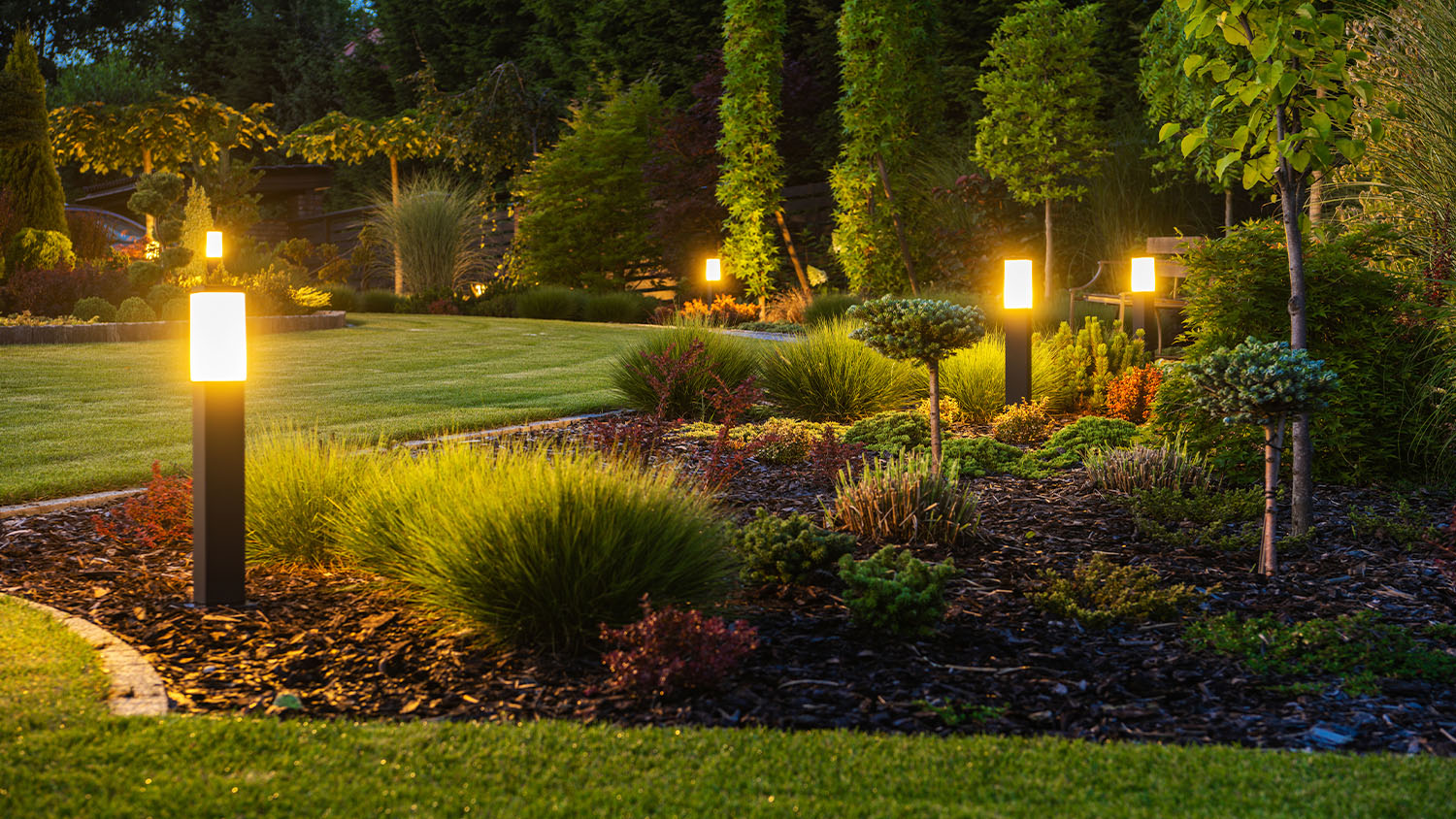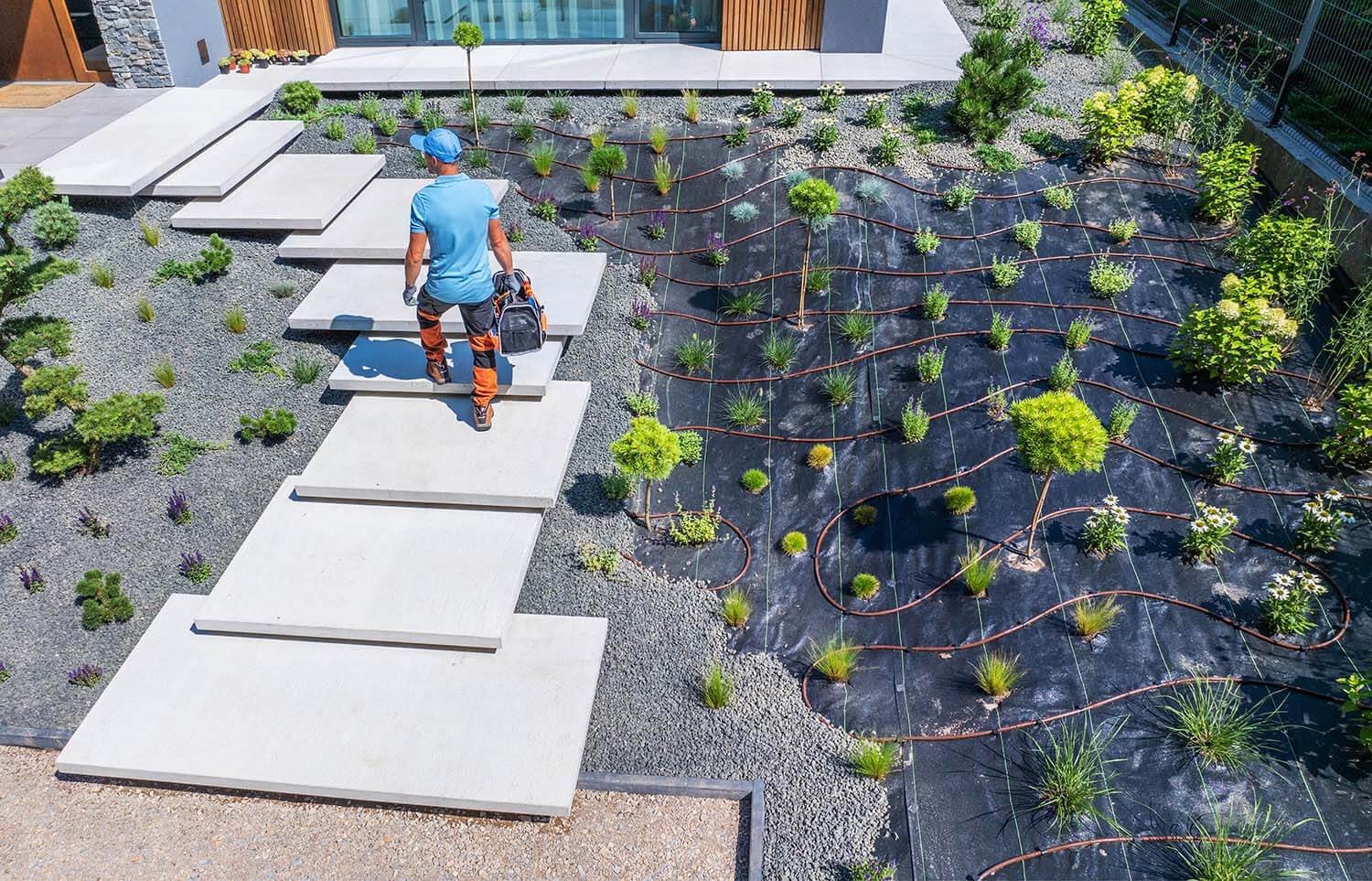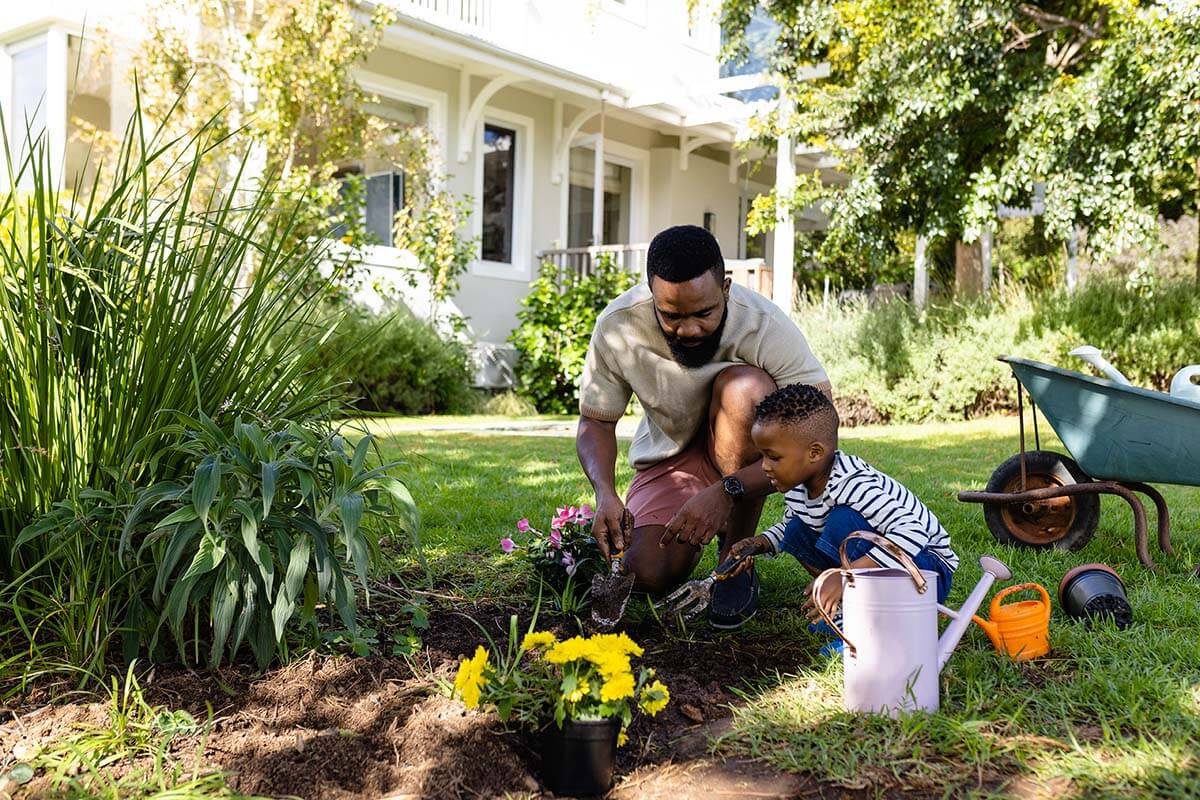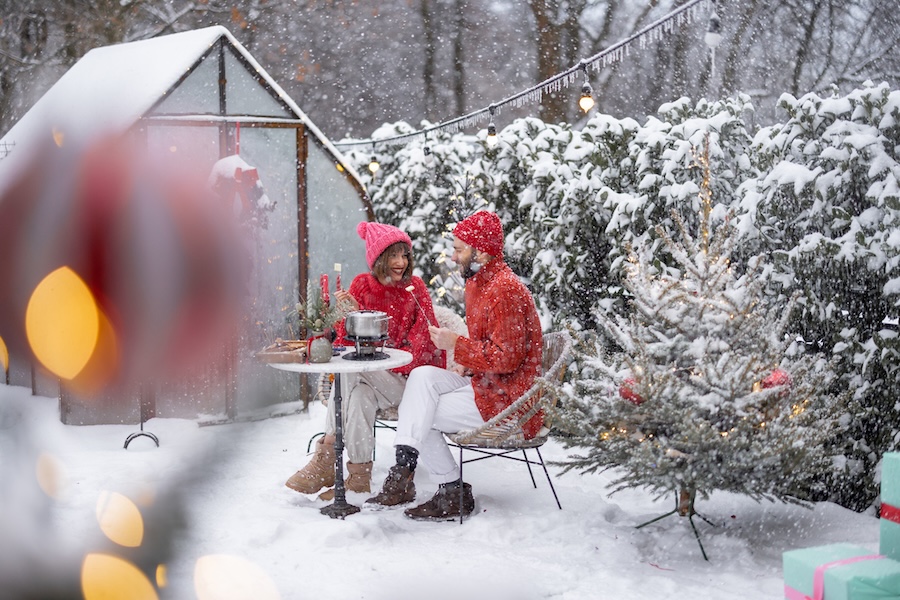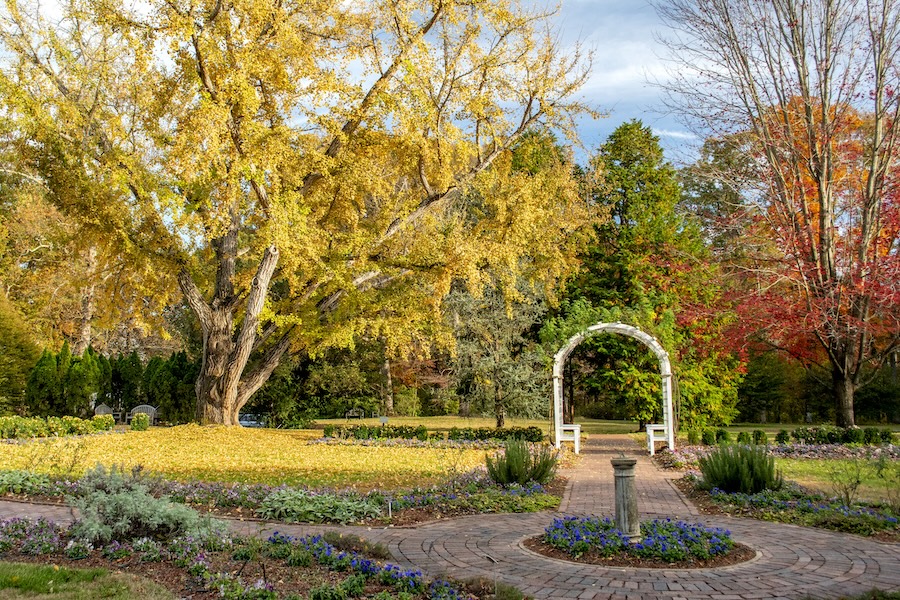Think of a moment where you were utterly captivated by a landscape. Chances are it wasn’t just the beautiful trees, shrubs, or other architectural elements that drew you in. It was likely also the artful way it was lit.
Just as an artful lighting scheme can make a room inside your home feel more appealing, the right outdoor lighting can dramatically improve the look and feel of your landscape.
The Importance of Outdoor Lighting
Outdoor lighting plays an essential role in landscape design. It does more than merely illuminating your outdoor space. It can enhance safety, create a mood, and accentuate the best features of your garden.
Strategically placed lights can light up your walkways and stairs, making it safer to navigate your garden at night. They can also deter unwanted visitors, adding an extra layer of security to your home.
Beyond the practical, lighting also has the power to transform your landscape into a magical space, creating a captivating ambience that allows you to enjoy your garden well after the sun has set.
And let’s not forget, highlighting certain features—a majestic tree, a striking sculpture, or a blooming flower bed—can truly make them shine.
Different Types of Outdoor Lights
The landscape lighting world is vast and full of diverse options, each bringing something unique to the table. Let’s delve a bit deeper into some of the different types of lights you might consider for your landscape.
Spotlights: These are your landscape’s superstars, putting the spotlight (quite literally) on your garden’s best features. Whether it’s a stately oak, a charming garden gnome, or a stunning piece of sculpture, spotlights create focal points that draw the eye and make a statement. They can be adjusted and aimed exactly where you want the light to shine, providing you with control over the drama and intensity of your landscape’s look.
Path Lights: As the name suggests, these lights guide the way along your garden paths, stairs, and walkways. They add both safety and aesthetic appeal, creating a warmly lit path that invites exploration. From classic lantern-style lights to modern LED installations, path lights can match any design aesthetic.
Deck Lights: When the sun sets, your deck doesn’t have to retire. Deck lights enhance the ambiance of your outdoor living spaces, making them safer and more inviting. They can be installed in steps, railings, or even the floor, creating a soft, indirect light that’s perfect for late-night conversations or early morning coffees.
Garden Lights: Typically lower to the ground, these lights play a dual role: they highlight your plantings and help guide the way in darker areas of your landscape. They come in different designs, from spike lights you push directly into the ground to hanging lights that provide a softer glow.
Decorative Lights: Think of those charming fairy lights draped over a gazebo or the subtle glow of solar-powered lanterns along a path. These lights might not provide a lot of light, but they add a magical touch to your garden, creating a whimsical atmosphere that enchants and captivates.
How to Choose the Right Lights for Your Space
Choosing the right lights for your outdoor space involves considering your landscape’s design, your lighting goals, and your personal taste. For instance, if you have a modern garden, sleek and contemporary lights might be a good fit. If your garden is more traditional, perhaps classic lantern-style lights would work better.
It’s also vital to consider what you want the lighting to achieve:
Do you want to illuminate a path, highlight a specific feature, or create a cosy atmosphere for outdoor gatherings? Your goals will guide your light selection.
Creating a Lighting Plan
When you create a lighting plan for your landscape, you’re essentially painting a picture but with light instead of paint. It’s an art form that requires both practical and aesthetic considerations.
Firstly, safety. You need to identify key areas that need illumination for safe navigation, such as paths, steps, and entrances. Do you have an outdoor kitchen or a deck? These areas would also benefit from good task lighting.
Next, think aesthetics. Which features would you like to highlight? Perhaps it’s a beautiful tree, a water feature, or even the texture of a wall. Consider also the ambience you’re trying to create. For instance, soft, warm lighting can create an inviting atmosphere for al fresco dining or a serene space for relaxation.
The concept of layering also plays a crucial role in a good lighting plan. The layering approach uses a combination of ambient (general), task (functional), and accent (focused) lighting to create a balanced and dynamic effect. It’s the interplay of shadows and light, the contrast between lit and unlit areas, that creates drama and interest in your landscape.
Don’t forget controls, too. The ability to control the brightness of your lights can dramatically affect the mood. Dimmers, for instance, allow you to create an intimate, cozy atmosphere or a bright, lively party vibe. Timers and motion sensors can help increase your lighting’s energy efficiency, only lighting up when needed.
Energy-Efficient Lighting Options
As homeowners are increasingly aware of their environmental footprint, energy-efficient lighting options have become more popular. LED lights, for instance, consume less energy and last longer than traditional bulbs.
Solar-powered lights, which store solar energy during the day and use it to power the lights at night, can be a great option, especially for areas that receive plenty of sunlight.
Tips for Installing Outdoor Lights
When it comes to installing outdoor lights, safety should be your first priority. Always remember that water and electricity are a dangerous combination, so outdoor lighting must be appropriately installed. You may need to hire a professional, especially for hard-wired lighting.
Consider the view from inside your home, too. The last thing you want is to have a light shining directly into your window. Finally, less is often more when it comes to landscape lighting. A few well-placed lights can create a more appealing effect than too many.
Maintenance of Outdoor Lights
To ensure your outdoor lights remain functional and attractive for many years, regular maintenance is key. This might involve cleaning the lights, replacing burnt-out bulbs, and checking for any necessary repairs. During winter, you might need to take additional steps to protect your lights from the harsh weather.
When expertly incorporated, lighting can transform your landscape design, making your outdoor space not just visually stunning but also more functional and safe.
If this seems like a lot to consider, don’t worry. At Jonathan Robert Landscapes, we’re experts in creating beautiful and functional outdoor spaces that can be enjoyed day and night. Reach out to us today, and let us illuminate your landscape in a way that will truly make it shine.

